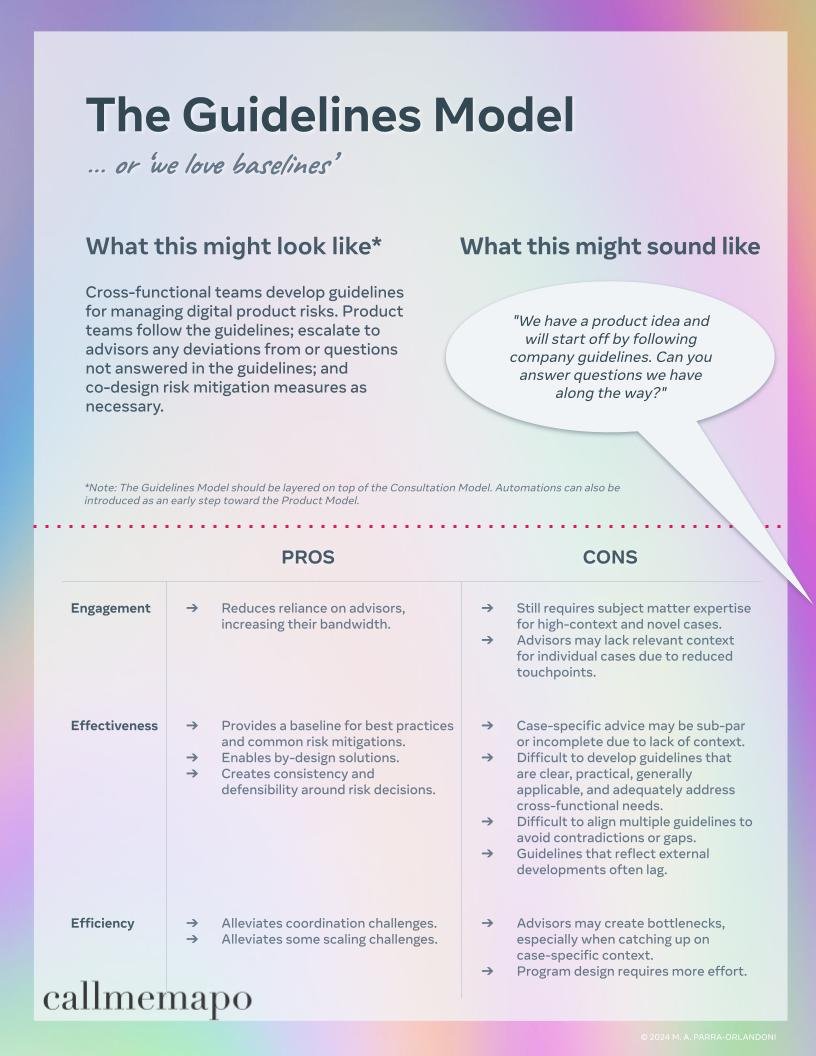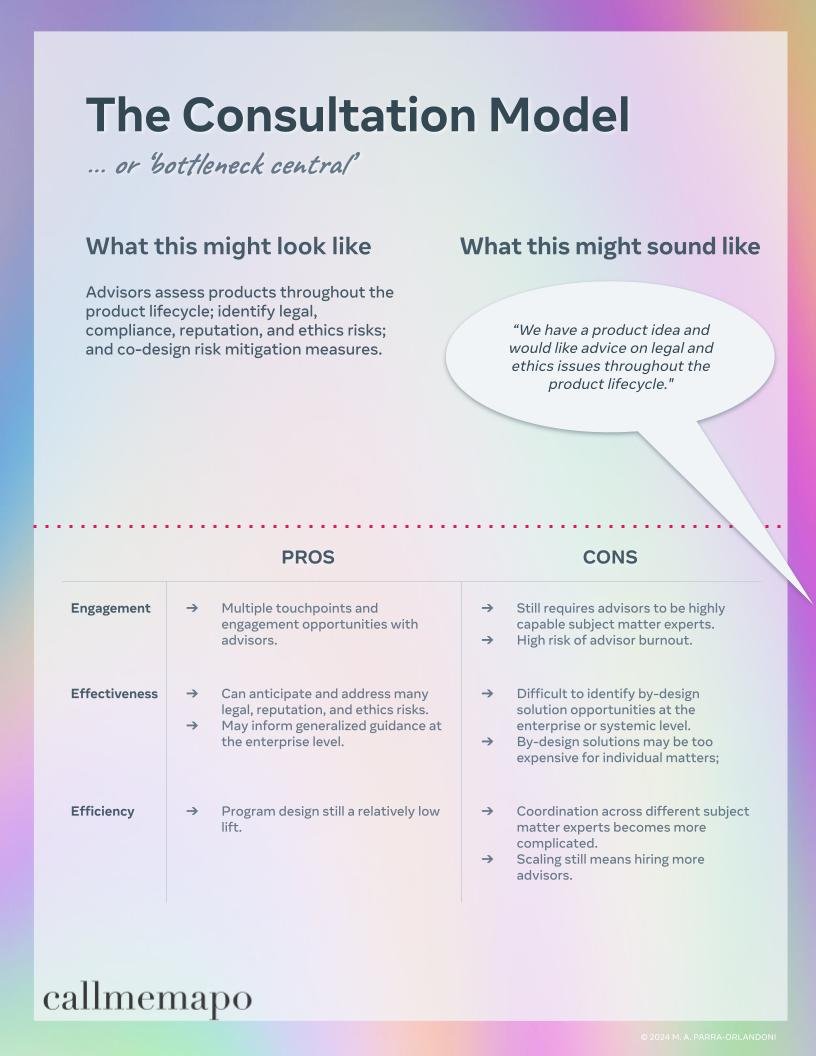Responsible tech program design
What does good look like?
Responsible tech pillar(s): #mindset #cultureOver the past decade, baseline requirements for building data-driven tech responsibly have shifted dramatically, and this is why responsible tech programs have quickly become a must-have.
But as it turns out, these programs aren’t easy to build.
They are cross-functional, multi-disciplinary, dynamic; they are technical, legal, strategic, operational, and more. And organizations have no choice but to figure it out.
There is fantastic guidance and commentary on the substance – the ‘what’ – of responsible tech programs (e.g., risk frameworks, guidelines, principles). I’ve also started to see more commentary on functions, roles, activities, and best practices organizations should adopt.
But one gap I’ve been thinking about a lot over the past decade or so is guidance on designing a responsible tech program that both scales and ages well.
In my experience, this calls for a responsible tech program framed around aligning business, technology, and societal priorities to create value for people.
In other words, the goal is not only to prevent harm, but to improve the status quo overall.
Note that this is a departure from the typical responsible tech framing around risk management. Although risk management is a necessary and core component of responsible tech programs, framing these programs around alignment and value creation is key to fostering a culture of innovation and trustworthiness. (More about why in a future post!)
In my view, solid responsible tech programs have a few additional characteristics:
Substantively.
☐ Offers relevant standards, applicable across the majority of cases.
☐ Is designed to deal with high-context and novel cases.
Externally.
☐ Keeps up with the external regulatory landscape.
☐ Meets or exceeds societal norms and expectations.
Cross-functionally.
☐ Aligns incentives and clarifies responsibility and accountability across functions.
☐ Transcends cross-functional cooperation and drives cross-functional collaboration.
Programmatically.
☐ Is scalable by design, including sustainable models for personnel, capability building, and tools.
☐ Recognizes that people are the most critical assets in these programs, so leadership considerations like engagement, org design, professional development, etc., are key.*
*Note: Based on what I’ve seen, the last bullet seems easiest to forget (or ignore?) because it usually isn’t functionally critical. However, the last bullet tends to be the difference between an effective and efficient team over time, versus a team constantly fighting burnout, morale, competence, and productivity battles. (See here and here; although these articles are a couple of years old, they remain quite relevant.)
Over to you!
Below you’ll find an outline of four responsible tech program models that builds on the concepts I’ve covered so far.
As with everything on this site: Take what’s useful and leave the rest — and feel free to build on these models. Feedback, questions, and suggestions are always welcome. Responsible tech program design is still in relatively early stages, and I expect it will continue to evolve as emerging technologies keep us on our toes!
Responsible tech program models
With all the above in mind, I’m sharing four archetypical responsible tech program models. 1. I’ve provided generalized and high-level model descriptions, as well as a sample of pros and cons along the dimensions of Engagement, Effectiveness, and Efficiency. 2. I’ve also provided a scorecard for each model to help you compare and contrast them.3. And finally, I’ve provided a blank scorecard you can use to assess your own responsible tech program.The archetypes
The Scorecard
Filled in for the four archetypes, and blank for your own use.






